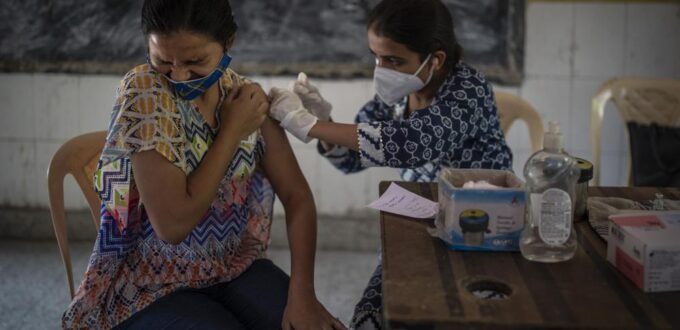For the first time since the launch of India’s vaccination programme, the number of people in the country who are completely vaccinated against Covid-19 has surpassed those who are incompletely vaccinated, data shows.
The development comes on the reverse of several weeks of the administration of alternate boluses excelling that of first boluses, a trend that came veritably clear through October and November as the vaccine content reached 80 of the eligible population (at least one cure), a position at which experts anticipate it to hit a ceiling.
As of Tuesday night, of the755.4 million people who have entered at least one shot of the Covid-19 vaccine in India,380.7 million people are completely vaccinated ( have entered both shots) and another374.7 million have entered only one shot, according to data from the CoWIN dashboard. When seen alongside India’s estimated population of 940 million grown-ups, this means that40.3 of the country’s grown-ups have been completely vaccinated while another40.2 have been given a single poke so far.
The fine significance of this number is that, in combination withnon-pharmaceutical interventions similar as masking and social distancing, 40 was the position of exposure (or vaccination) at which herd impunity was anticipated to set in according to a model created by experimenters at the University of Nottingham and the University of Stockholm.
n Tuesday, India recorded new cases of Covid, pushing the case rate to the smallest in 274 days. Therefore far, the country has reported nearly34.5 million Covid-19 cases and deaths from the viral complaint.
According to data maintained by the website Our World in Data, on average,54.1 of India’s population (the entire population, not just those above 18 times) have entered at least one shot of the vaccine, while26.8 are completely vaccinated. The global normal for these numbers is52.2 and40.9, independently. This means that while India leads the global normal in total content, it’s vastly before in the proportion of people completely vaccinated.
The gap can be incompletely attributed to the modification of the specified gap between the two boluses in the case of Serum Institute of India’s Covishield (a vaccine that accounts for nearly 90 of all boluses administered in the country). On May 13, the Union health ministry blazoned the widening of the gap between the boluses of Covishield from 4-8 weeks to 12-16 weeks. And due to the large proportion of those vaccinated having entered Covishield, this change in policy has had a slinging effect on the number of people getting alternate boluses. It has ended up having a plateauing effect on the total number of people fully vaccinated in the country ( see map) aftermid-May, indeed as further people entered first boluses.
The country, still, has been closing this gap since the launch of October, when administration of alternate boluses started excelling that of first boluses. The number of people who have been administered just one cure of the vaccine have been steadily dropping since the first week of October, data shows.
Officers sweat that a drop in first boluses with nearly 20 of the country yet to be given indeed a single cure can dent the larger thing of completely vaccinating all of India’s grown-ups by the end of the time– holding on to their end of universal vaccination, commodity no country has managed to achieve.
On Tuesday, Union health minister Mansukh Mandaviya stressed that the completion of the Covid-19 vaccination drive with 100 administration of both the boluses to India’s grown-ups is an “ immediate necessity.”
We’ve to all insure that everybody is vaccinated,” he said. Mandaviya was interacting with stakeholders helping the government in incubating the reach and content of vaccination under the government’s‘Har Ghar Dastak’ drive under which officers are conducting door-to- door vaccinations of people eligible for alternate cure as well as those who are yet to be administered their first poke.
As part of this drive before this month, the Union government directed all countries to plan to achieve at least 90 first cure content by the end of the November, stressing on the need to accelerate the immunisation drive in several regions with fairly lower content rates.
Experts said that a brief drop in vaccination rate for first cure administration was anticipated due to the gleeful season and may not incontinently be a cause for concern. “ People who are yet to admit indeed a single cure of the vaccine generally tend to be a little more cautious of any side goods they may get from their first shot. I’ve a feeling that since there have been so numerous carnivals in the country from October onwards, numerous people would have delayed getting their first dabs because they didn’t want to witness side- goods like fever that may hinder their fests. Hopefully should see the first cure administration pick up again soon,” said Dr Lalit Kant, former head of epidemiology at the Indian Council of Medical Research.


No Comments Yet